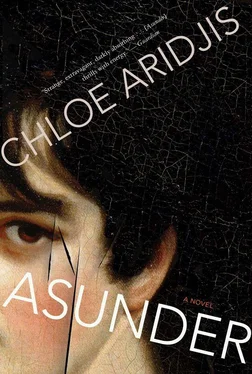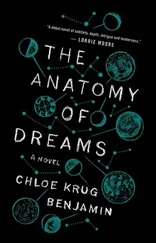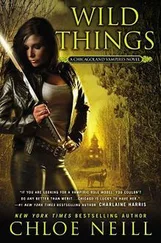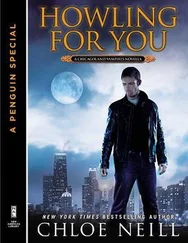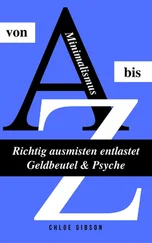I’d then fashioned a mountain, coated with real soil and faded grass, its peak a powdery white, a moth glued halfway up its steep face in perpetual ascent. And then warmer scenarios. A volcano with its upper and lower mantle, marbled crust and chamber of magma. A desertscape that lay somewhere outside time, its pinkish sand in permanent undulation.
Two seascapes: choppy waves of crystallised sugar, boats with slanted masts and torn sails of gauze. For the dark clouds pressing down on the horizon I’d rubbed cigarette ash on to tufts of cotton and flecked the borders with ink, then suspended them with nearly invisible threads. Skies hooked up to backboards, seas tethered to a tiny plank.
All was possible, and nothing.
After a year or two of open landscapes on boards I turned my attention towards interiors. The first was a grotto in an eggshell, with a jagged tooth from my parents’ old cat glued to the centre. Then, a cave with miniature wax stalactites and stalagmites inhabited by tiny liquorice bats. A pale blue eggshell with a small door gave on to an interior night sky, the stars dots of silver metallic marker on a background of Indian ink. A low Dutch horizon, with toothpick windmills, hinted at human presence and endeavour minus the actual humans to complicate matters.
No human figures. Only moths. The idea originated when I moved to Essex Road. First, from a sign in the window of Get Stuffed assuring customers that animals weren’t ever sacrificed in the name of taxidermy and that many of the specimens such as foxes had come from roadkill — and then when I saw Jane and her moth strips. Yes, cruel, but at least I put the cruelty to use. So I added these stilled lives to my still lifes, and I liked the results. Let them die for something.
With my pair of little nail scissors I would cut round the outline of their bodies, the fatal strip serving as a ready mount. At first I’d tried to detach them but their wings would crumble between my fingers. Once I’d cut one out I would then paste it on to a desert, mountain, a ship at sea.
Over the months the moth would slowly, very gradually, decompose, coating everything in a fine brown sparkly powder, and then the time would come to check on the strips again, the pheromones having continued to issue their wicked siren call. I don’t know what would happen were I to stop living with Jane, whether I would go out and buy them myself; it was simply part of the ecosystem within the flat.
The landscapes came naturally to me. From the start, it was as if a mysterious hand had taken hold of mine and directed it. Without the help of a manual I’d known where to cut an eggshell, in which direction to make the incision, how to gently detach a quarter or a half. First I’d make a hole at the top, tip the egg over and empty its final contents with a syringe. Once it was clean and dry I’d cut and fortify, with glued paper or varnish. At first I used the sharpest knife in the kitchen but after some research went out and bought myself an oblique burin, its steel blade slicing happily along the calibration lines I’d marked on the shell. I would carve through the centre halfway horizontally, then halfway vertically, and remove one of the upper quarters so that the bottom half remained, ready to welcome its features.
Emptied, strengthened, given a new horizon. A strip of blue paper, the sky. A strip of white, a coat of winter. A strip of green, an untrampled field. A square of black, a patch of night. I would insert mountains of cork, lakes of pressed aluminium foil, trees of cotton impaled on matchsticks. The stands for the eggshells were cardboard, little circular pedestals on which each oval was balanced.
By the end of each week a fine layer of dust would come to settle over everything, gathering more thickly in the gaps and ridges between topographical features, and I’d use a special cloth to remove it. This handmade collection of mine, eighteen and slowly growing, formed a nuclear centre into which everything fed back, and when I returned home from a day’s work or an evening out I would head straight over. Time was collapsed into them, the smaller, the more infinite, and every now and then I’d hold up a magnifying glass to one to see whether over the years some secret message had surfaced but I never found anything, and of course magnification tends to dent fantasy rather than enlarge it.
Sometimes I would adjust one, inspired by a detail I’d noticed in a painting or else simply aligning things with my current mood, for I hated bucolic landscapes when I was feeling stormy, and stormy landscapes when I was feeling calm. I’d tear off a few leaves and scatter them on the ground, or loosen some sand in the desert, tiny acts of immense satisfaction.
That evening I held up the volcano, one of my favourites, noticing how much dust had collected in the crater and how the moth on its side would soon have to be replaced, since a bit of its wing was missing or, rather, had crumbled away. I reached for a tissue and carefully cleaned out the crater’s mouth, the red paint intensifying almost immediately as if the volcano itself were becoming active.
Mornings when I’d emerge from Green Park Tube and into the thrum of Piccadilly towards Trafalgar Square I would often pause outside Fortnum & Mason with my coffee and stare at the lavish window displays, imagining the symphony with which the glass panes would shatter and splinter into a thousand tiny shards littering the pavement with fractured light, the same shop windows into which my great-grandfather Ted would’ve gazed decades and decades before, when he too was a warder at the National Gallery.
I considered myself fortunate to be connected via my lineage to one of the most significant incidents in our museum. Nothing could rival the story Ted had experienced first-hand, and over the decades the details, reviewed a thousand times in my mind, grew so familiar they almost became my own.
Until the last days of his life he could remember what he’d eaten for breakfast that morning of 10 March 1914, and the southerly wind that blew into London as he kissed my great-grandmother goodbye and set out for work. Yet Ted wasn’t the only one making his way towards the National Gallery at half past nine. As he travelled down Piccadilly a small woman in grey was taking the back streets, crossing Soho at a brisk pace, scarcely aware of the shops awakening around her, bisecting Leicester Square in a hurried diagonal. Small in size and fitted neatly into her skirt and coat, she cut a figure so demure that people would scarcely have noticed her.
Upon reaching Trafalgar Square she slowed her steps and entered the National Gallery through the main door like everyone else. Entry was free on Tuesdays yet it was still early, a few minutes past ten, and visitors had only just started to trickle in. She toured the rooms, taking in the familiar paintings, paused in Room 17, lingered elsewhere with her sketchbook.
Noon drew closer. People started heading out for lunch. The woman in grey returned to Room 17 and walked slowly over towards Velazquez’s Rokeby Venus, which hung on the north wall on the right-hand side. Purchased for £45,000 by public subscription eight years earlier, the painting drew large numbers of visitors and was the artist’s only surviving nude. On the plush seat in front of her, two large men with broad shoulders sat staring ahead.
The woman started to sketch. One of the men rose from his seat and wandered out. The other crossed his legs and raised a newspaper to his face. This very paper, across whose front page her name would be emblazoned the following day, conveniently hid her from view.
The first blow shattered the thick protective panel. She was experienced in the shattering of glass, mostly in the way of shop windows, but marvelled at how easily it yielded. The plate, one third of an inch thick, cracked in all directions. At first, the seated man — a detective assigned, with his colleague, precisely because of the suffragette threat — thought it was the skylight, which was being repaired that morning, and rushed to where a ladder had been left propped against the wall. From the opposite end of the room a warder, alerted to the drama at hand, started to rush over but slipped on the polished wooden floor and, as is often the way in history, this slowed him down for a few critical seconds.
Читать дальше
